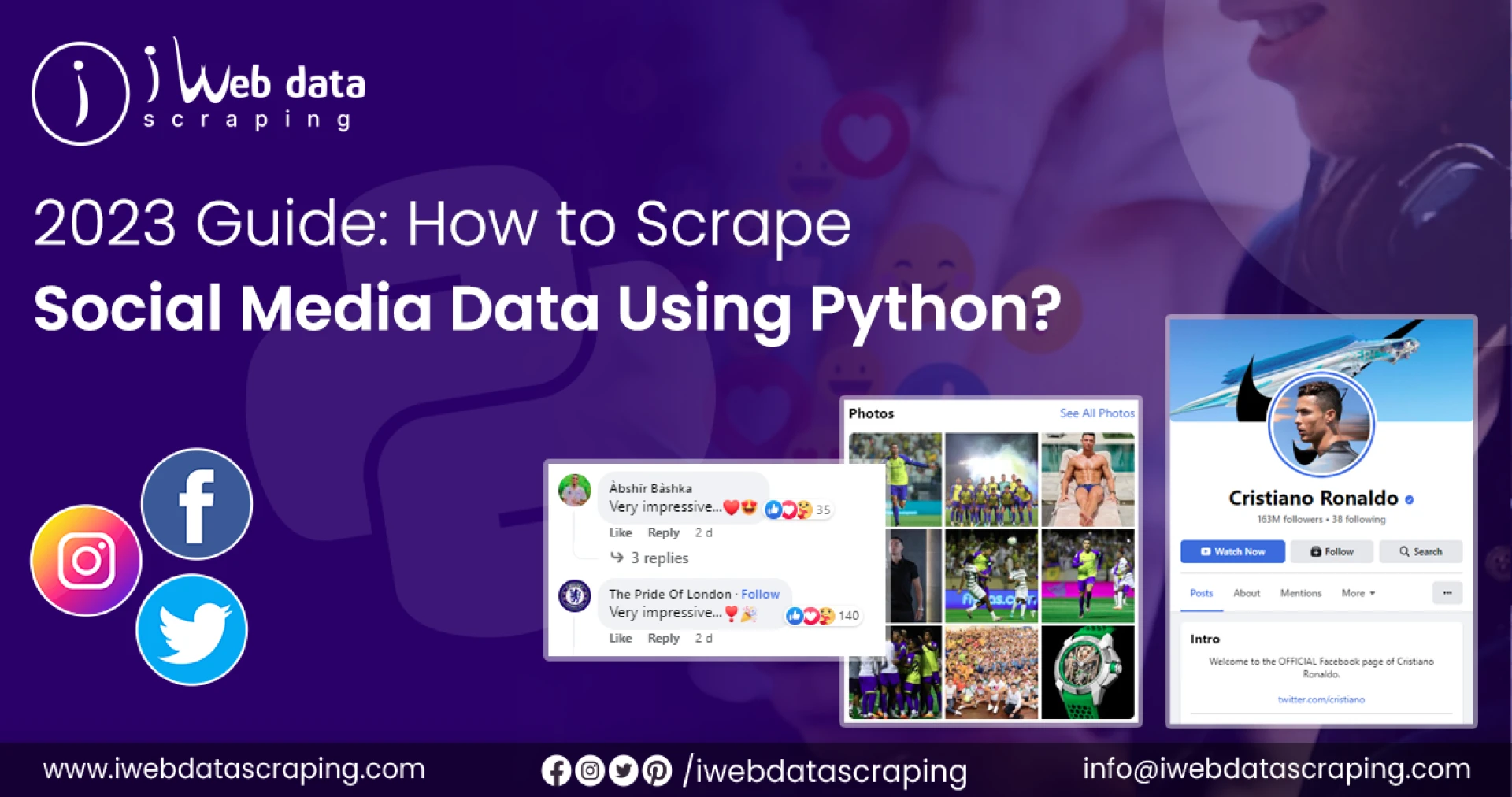
Social Media Data scraping services, also popularly considered data scraping, collects data from social media platforms. It automatically collects information from websites using specialized tools or software called social media scraper.
Several platforms like Facebook, Twitter, Instagram, LinkedIn, and others provide APIs that enable developers to retrieve data from their platforms. This data is, however, limited. On the other hand, data collection from Instagram, Twitter, Facebook, etc., helps scrape Social Media Data Using Python by pretending human interaction and navigating several web pages.
The general steps involved in Social Media data extraction are:
- Data Collection: You must first identify the target platform and the specific data for extraction. It includes user profiles, posts, comments, likes, followers, and other important information.
- Crawling & Parsing: The process of crawling web pages is to find and extract the desired data. Parsing involves the extraction and structuring of the relevant data from the HTML or JSON content.
- Data Storage & Analysis: After the scraping procedure, the extracted data is in a structured format, including CSV or JSON format. This data is then helpful for analysis and processing and used for various purposes, like market research, sentiment analysis, or customer insights.
List of Data Fields
Below is the list of the data fields found when performing social media data mining.
- User information, including profiles, usernames, bio, location, profile picture, URL, number of followers, number of followings, etc.
- Posts information, including content, shares, comments, timestamp, photos, URLs, videos, hashtags, etc.
- Comments, including content, username, timestamp, etc.
- Likes and reactions
- Followers and following, including profile information, usernames, counts, etc.
- Hashtags and mentions in the posts.
- Images, videos, and audio
- Likes, comments, shares, tweets, views, etc.
Importance of Web Scraping Social Media Data
Although, there are several benefits of web scraping social media data. But, here, we have emphasized the major ones.
- Market Research: Social media platforms contain valuable information about users\' preferences, opinions, and behavior. Use Social Media Data scraping services to collect this information to develop effective marketing strategies and make informed business decisions. Scrape social media data to gain insights into consumer trends, identify target audiences, and analyze competitors\' movements.
- Sentiment Analysis: Sentiment analysis of social media data helps judge products, brands, or events. By collecting data from social media platforms, businesses can monitor customer satisfaction, track potential issues, and address those issues promptly.
- Identify Influencer: Social media influencers are a significant part of marketing campaigns. Use social media data extraction services to collect data on influential individuals in specific industries. Analyze their content, engagement rate, etc., to find suitable influencers to enjoy collaboration.
- Customer Details: Social media web scraping python can collect data on customers, their interests, behavior, etc. Use this data to enhance customer offerings.
- Trend Monitoring: Stay updated with the trending topics and stay trendy to engage with your target audience.
Scrape Social Media Data Using Python
To extract social media data using Python, have Python, pip, BeautifulSoup, and Selenium installed.
Let\'s start with Facebook scraping.
Scrape Facebook Using Python
While starting with the Facebook data collection, the role of Facebook data scraping services is to first look into the page you want to parse. Decide which data you want to scrape, which path you want the bot to take, and the specific data selectors you require. The entire process is achieved with Facebook Pages scraper.
Let\'s take the example of Tom Cruise\'s Facebook public page. You will find his details, links to other pages, posts, and other media. All this data is easily scrapable. However, you must first inspect the page to scrape data from Facebook posts.
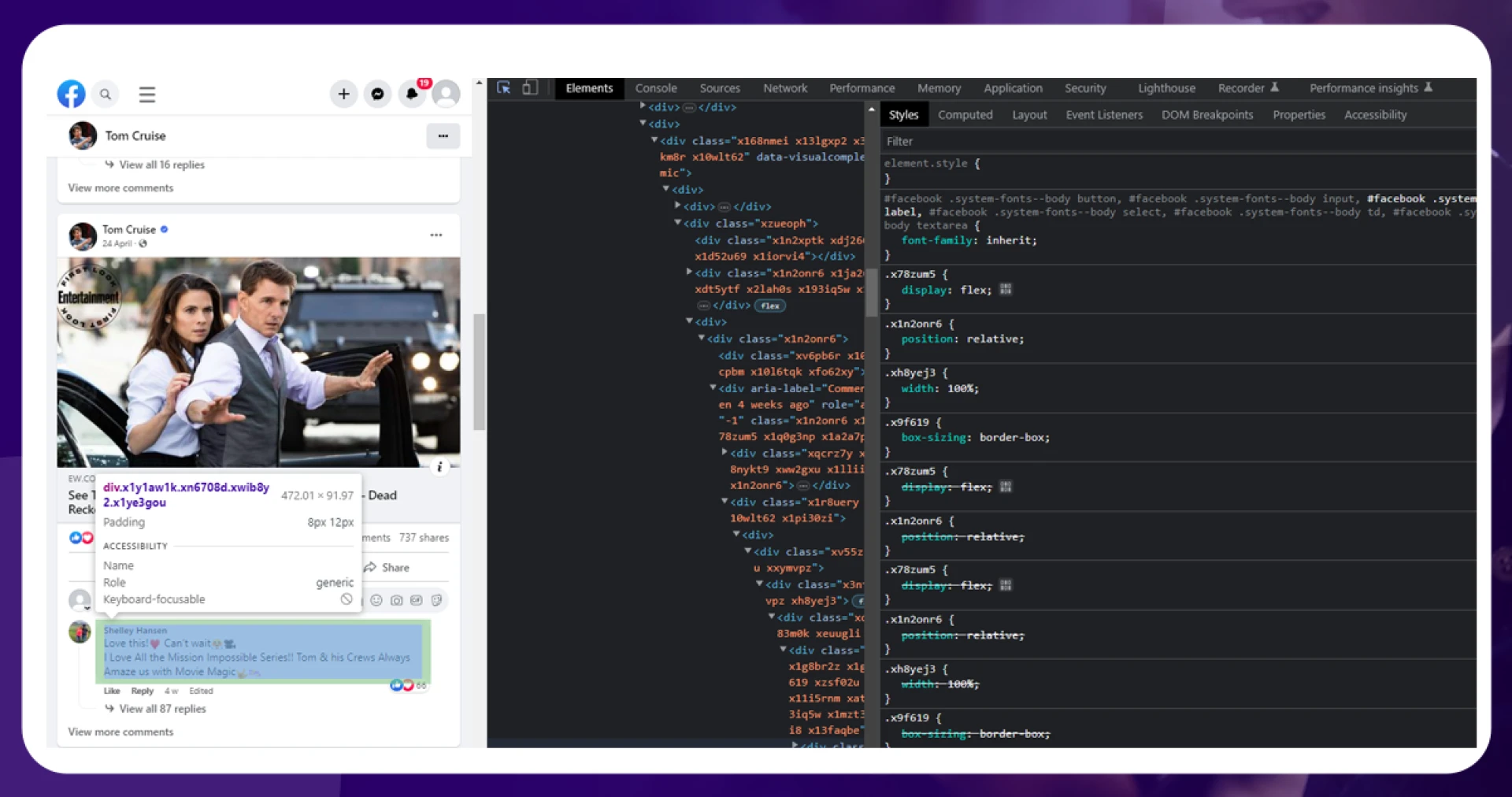
After locating the selectors, start writing the scraping code. Now, open the Python file and import Selenium, BeautifulSoup, and Pandas.

Mention the target page and introduce Selenium to imitate the user to avoid blocking.
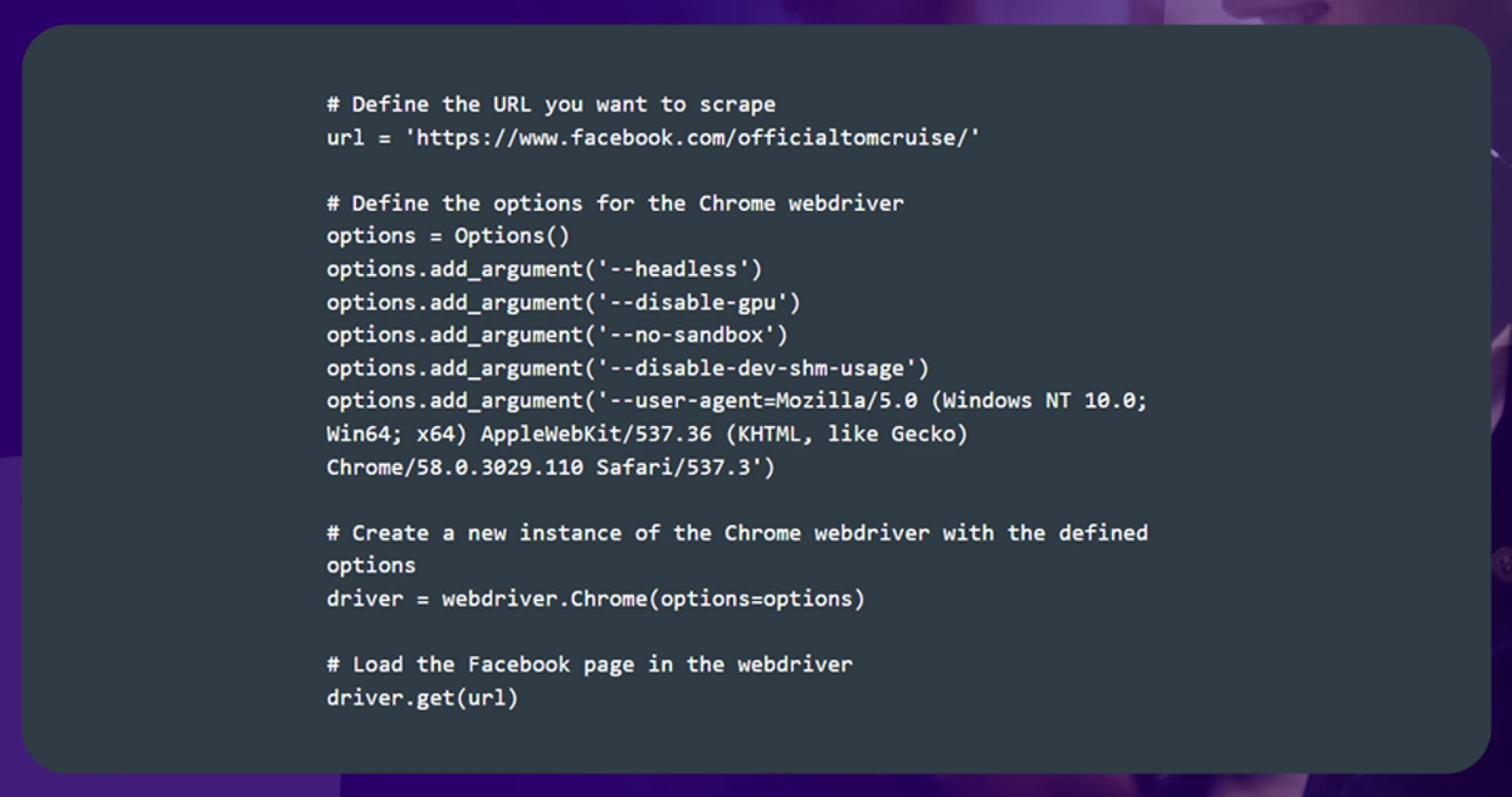
Now, we will change the above text into a readable format using BeautifulSoup.
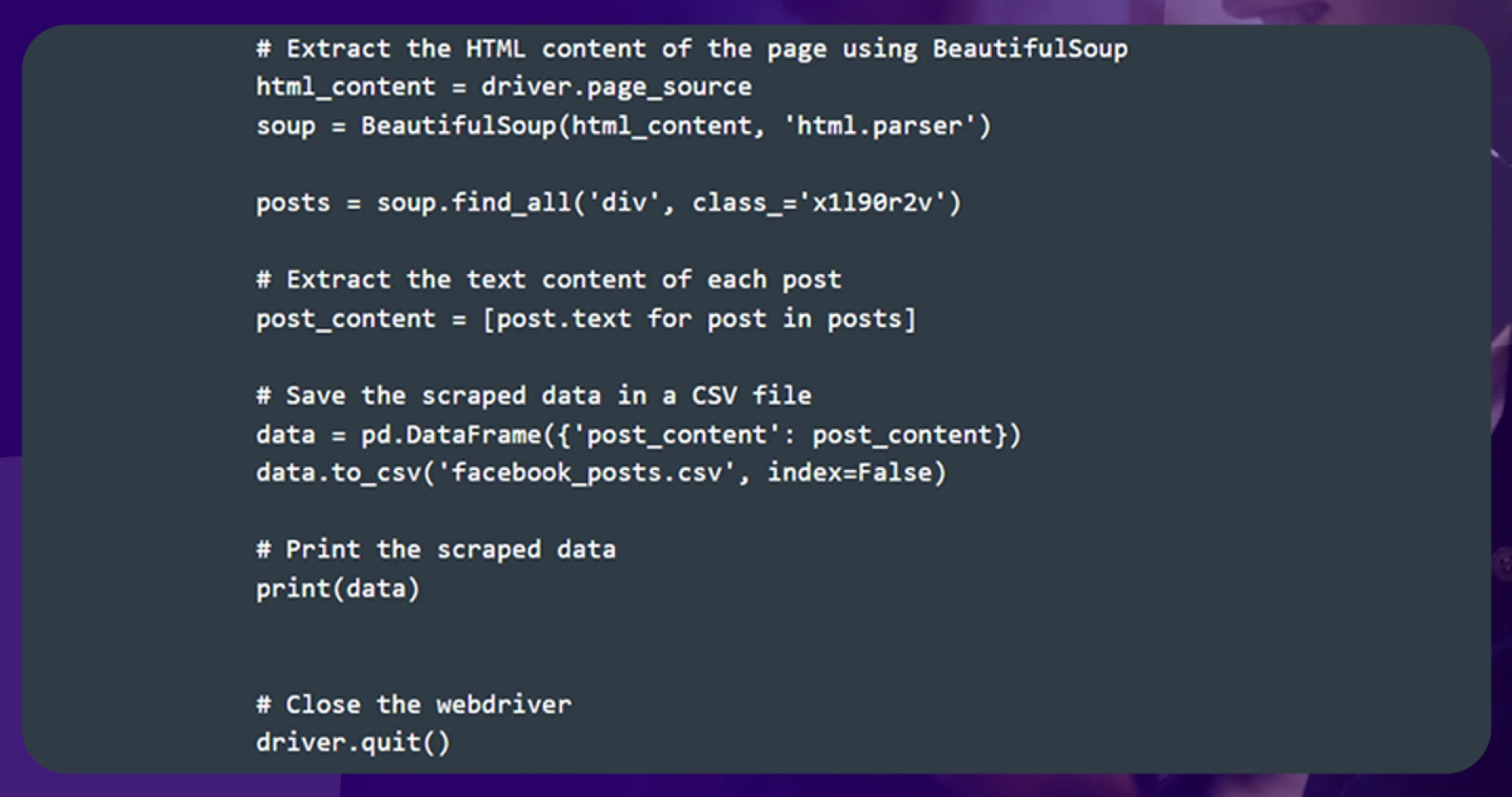
After segregating the data, structure it in a tabular form, i.e., DataFrame. The output will appear like this:
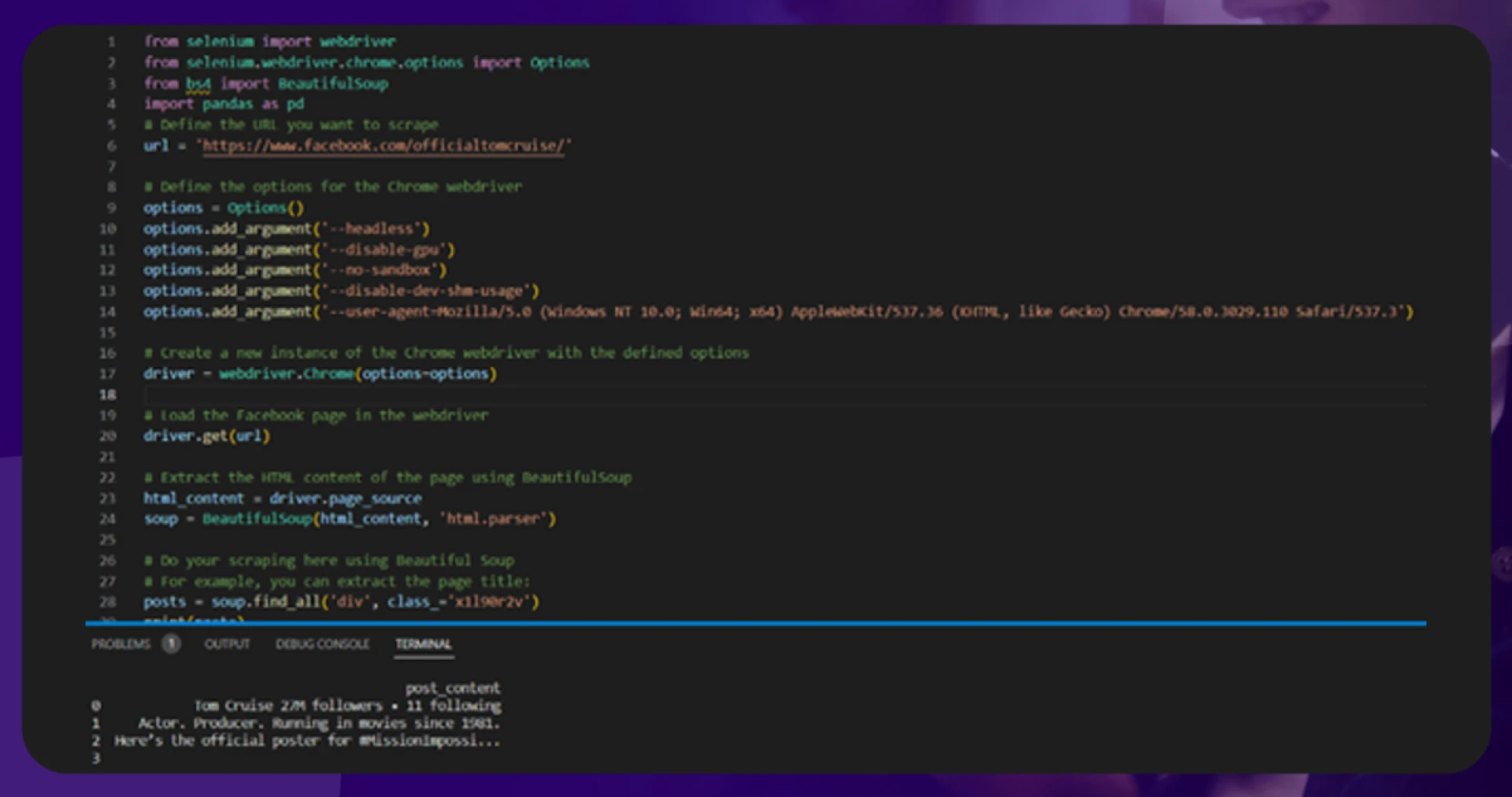
Scrape Twitter Using Python
Here, we will scrape Twitter data using the same method we did for Facebook with Twitter data scraping services. For this, we will take Tom Cruise’s Twitter page and separate a selector for the required data. The Twitter scraper will take care of the entire process.
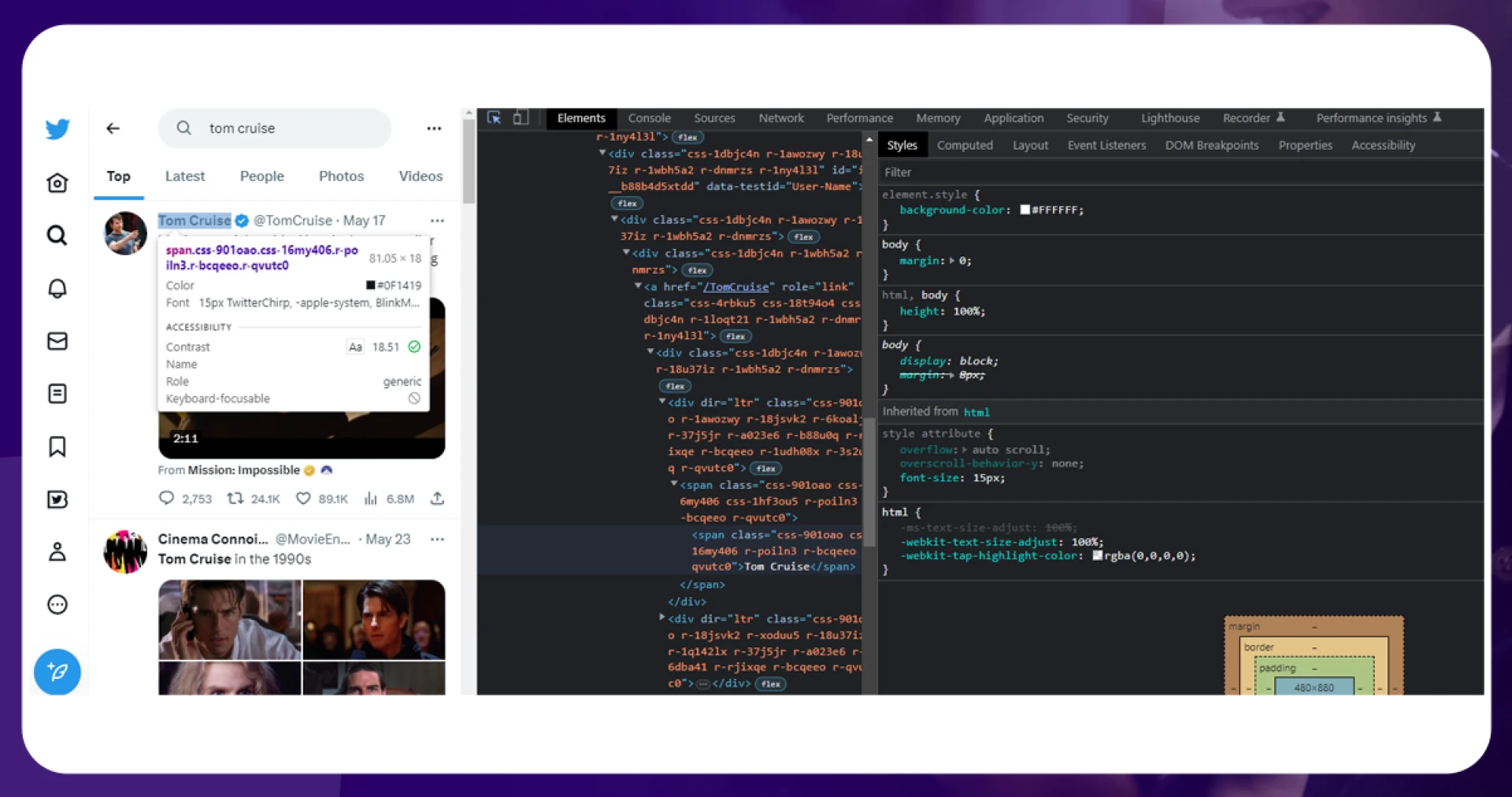
Here, we will scrape all the Tweets text using the data-testid=tweetText attribute.
Begin with Python file creation and then use the below-mentioned code to scrape the data.
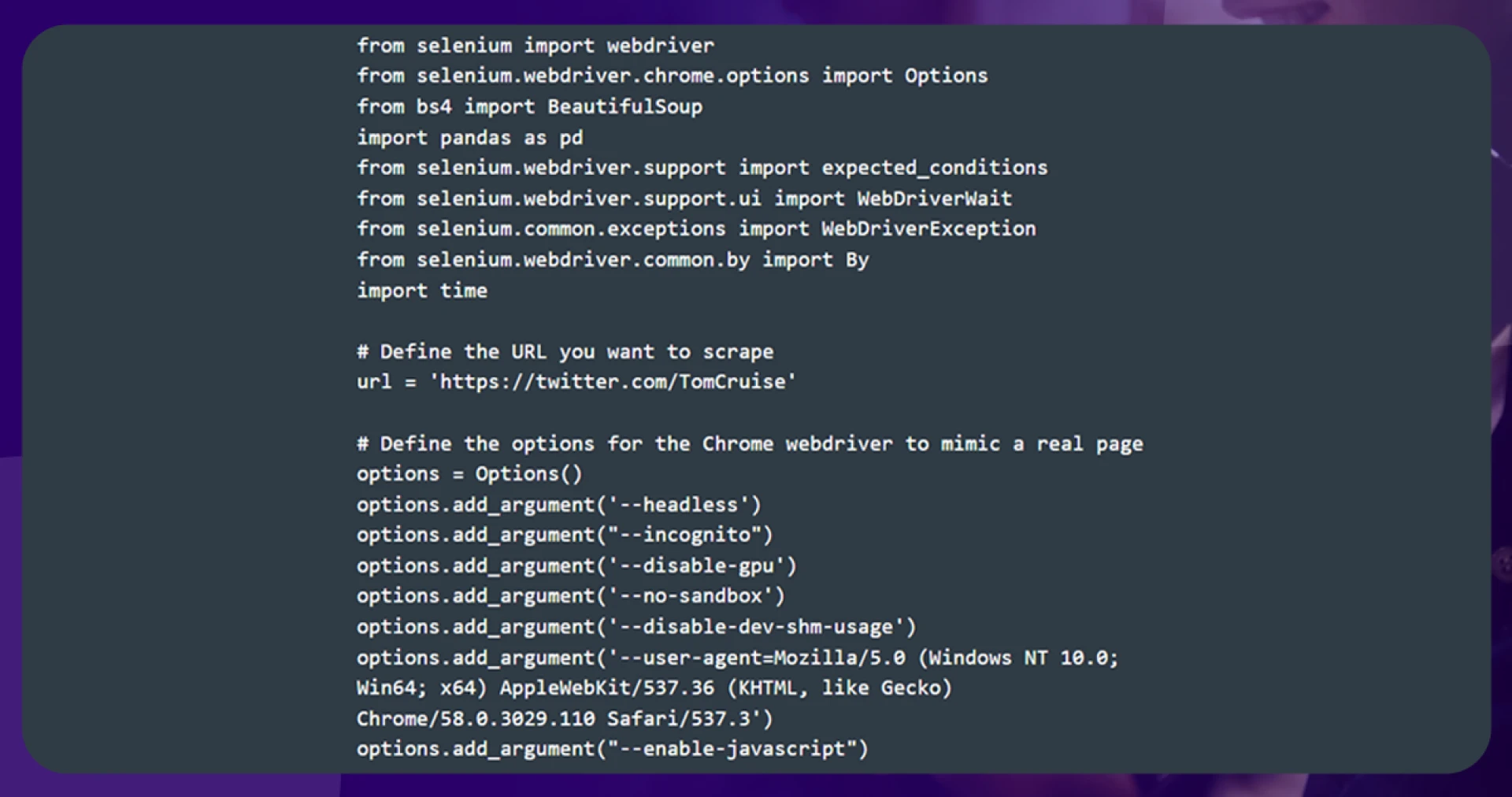
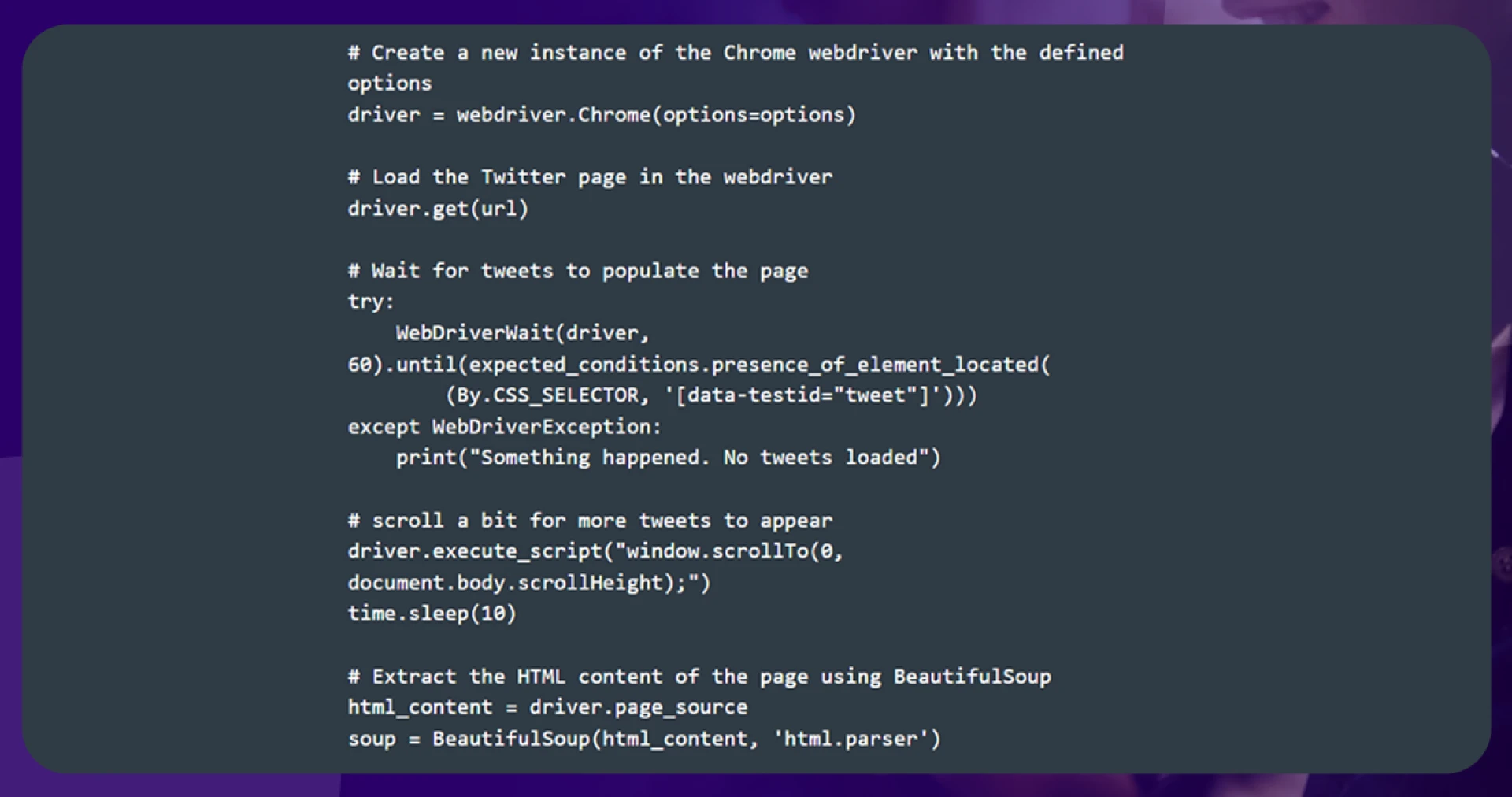
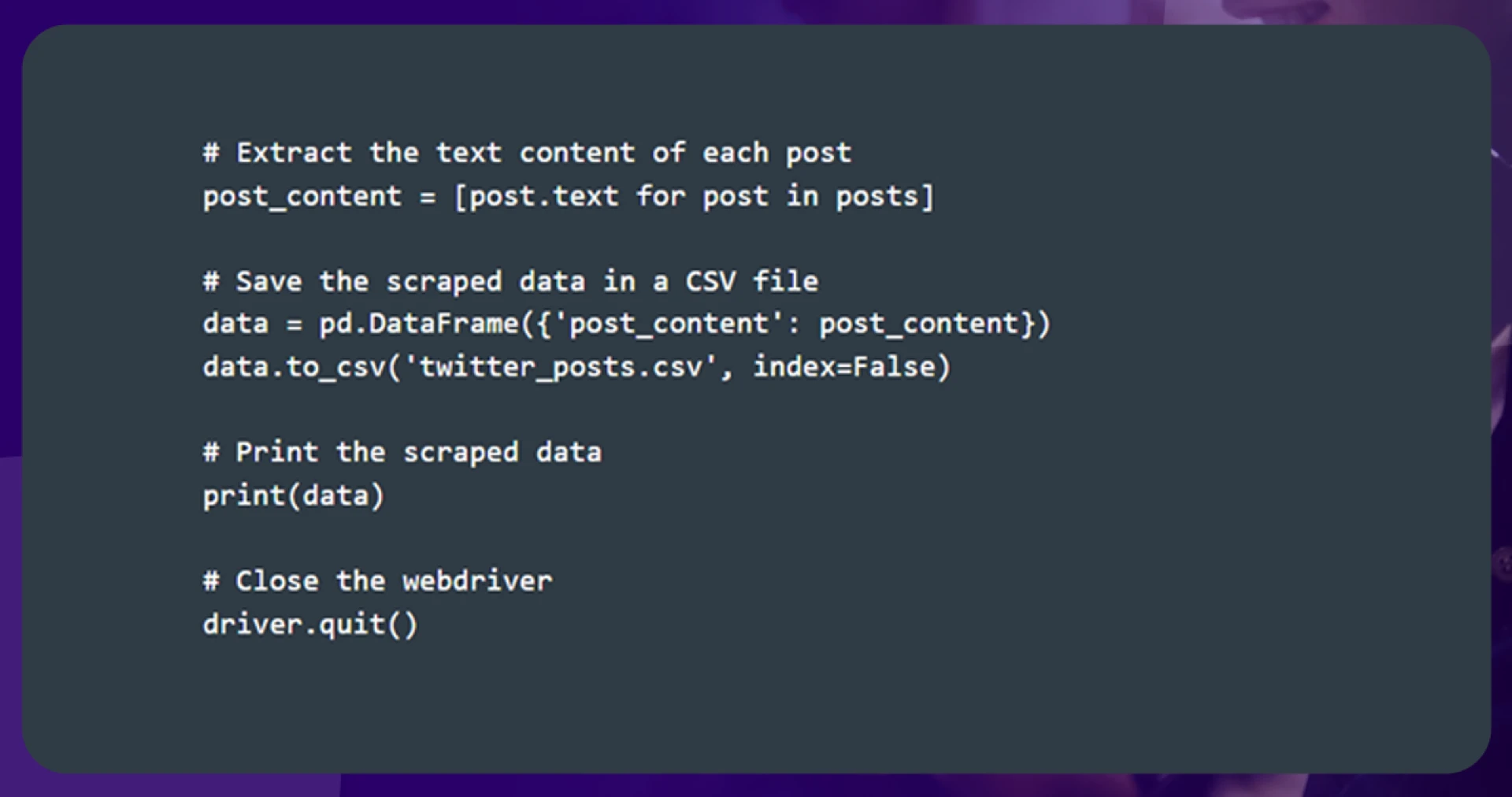
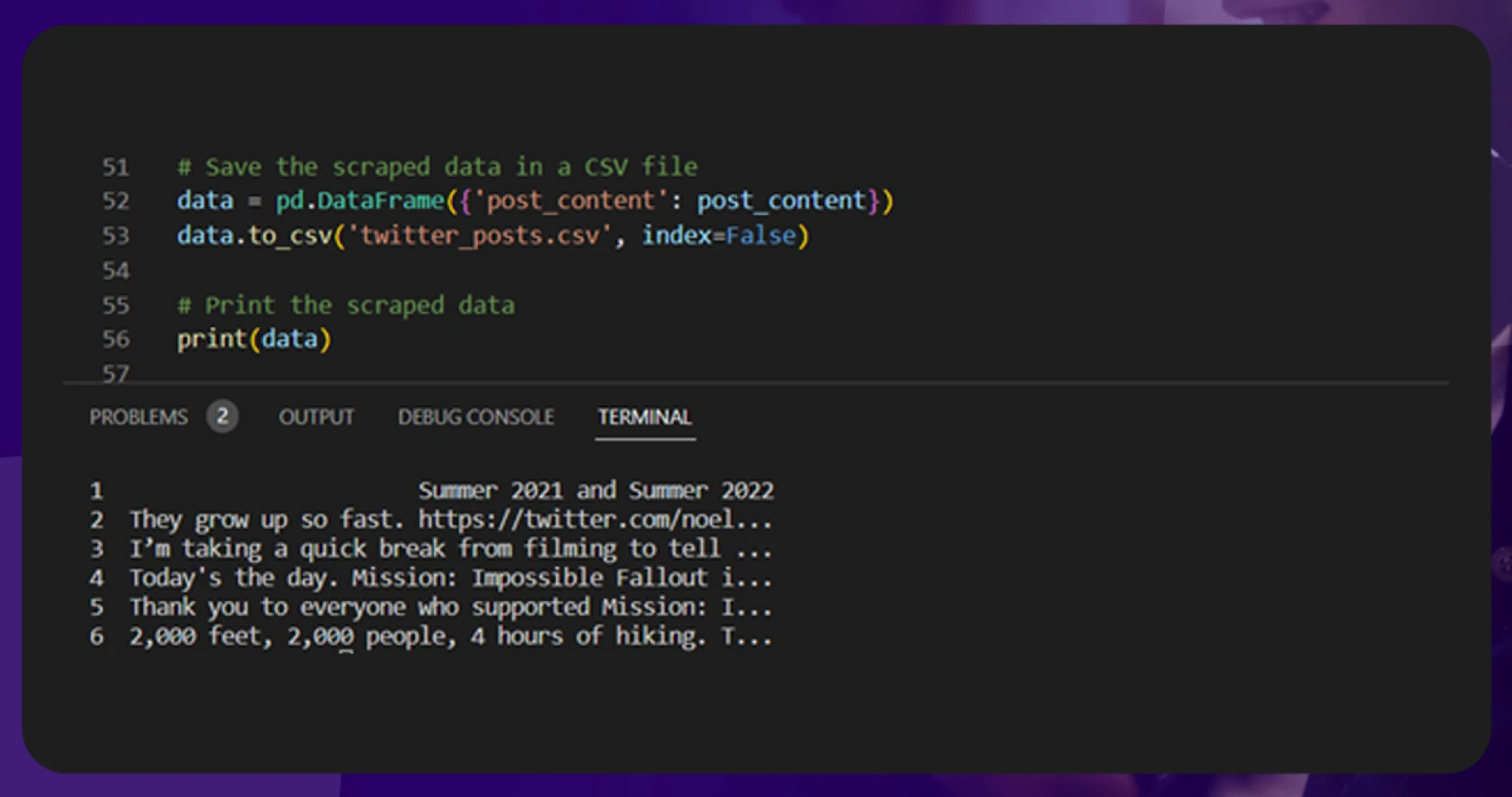
Scrape Instagram Using Python
For Instagram data scraping, we will again use Tom Cruise’s Instagram page, having content, images, and videos. You can directly scrape media URLs and alt descriptions from the pages Using Instagram scraper.
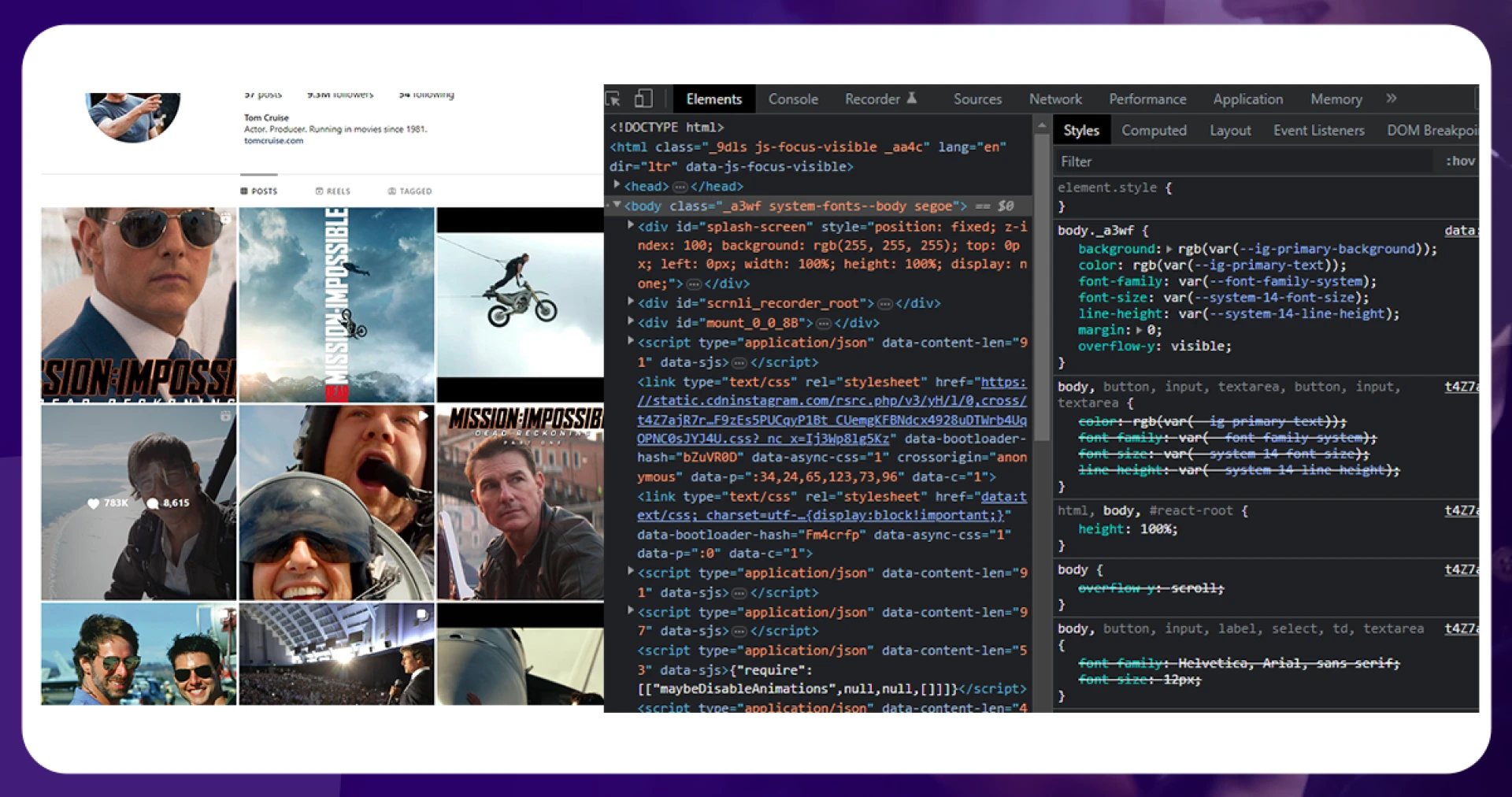
Perform this function with Instagram data scraping services by selector selection and DataFrame structuring.
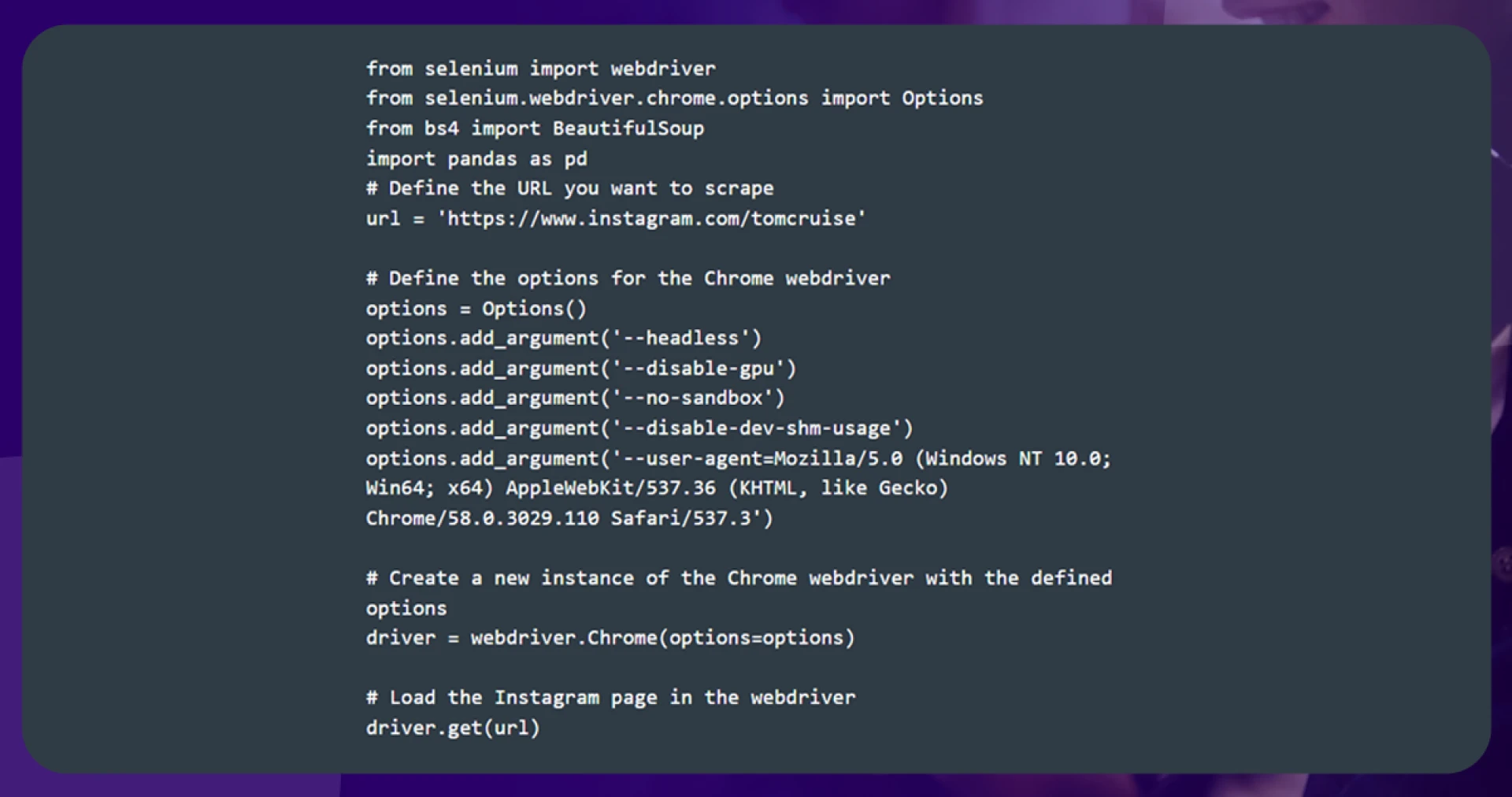
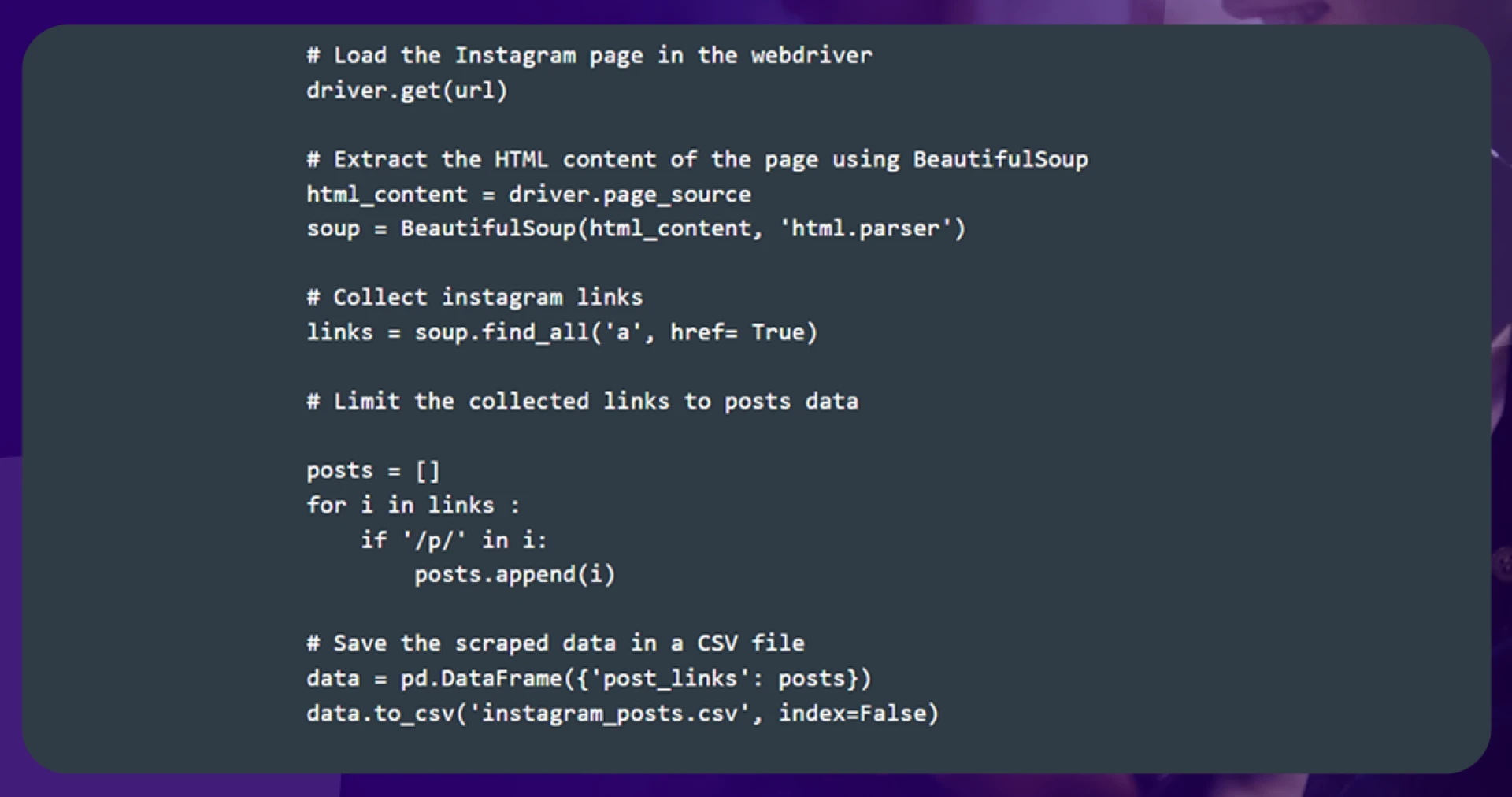

Conclusion
In this article, we have elaborated on the methods of scraping social media data using Python. We have emphasized Facebook, Twitter, and Instagram data scraping and how to use the scraped data for sentiment analysis, market research, and analyzing trends.
For more information, get in touch with iWeb Data Scraping now! You can also reach us for all your web scraping service and mobile app data scraping requirements.
#ScrapeSocialMediaDataUsingPython
#socialmediascraper
#SocialMediaDatascrapingservices
#scrapedatafromFacebookposts
#FacebookPagesscraper
#Twitterdatascrapingservices
#Instagramscraper
#Instagramdatascrapingservices
#datacollectionfromInstagram,Twitter,Facebook
#WebScrapingSocialMediaData


